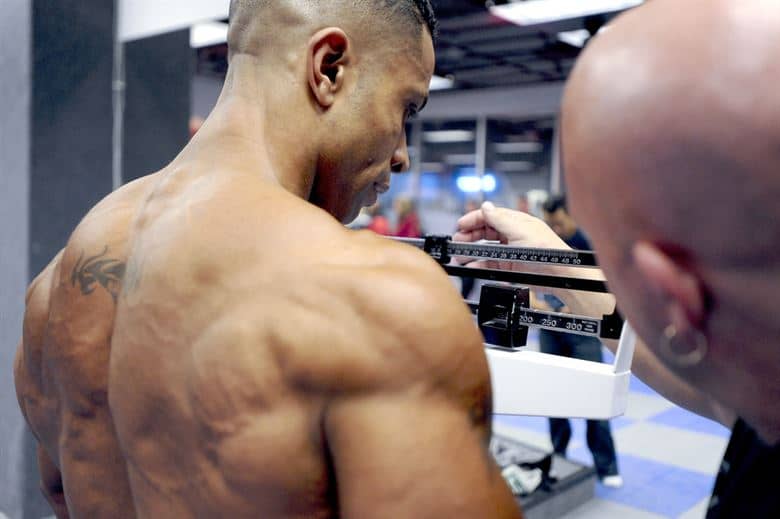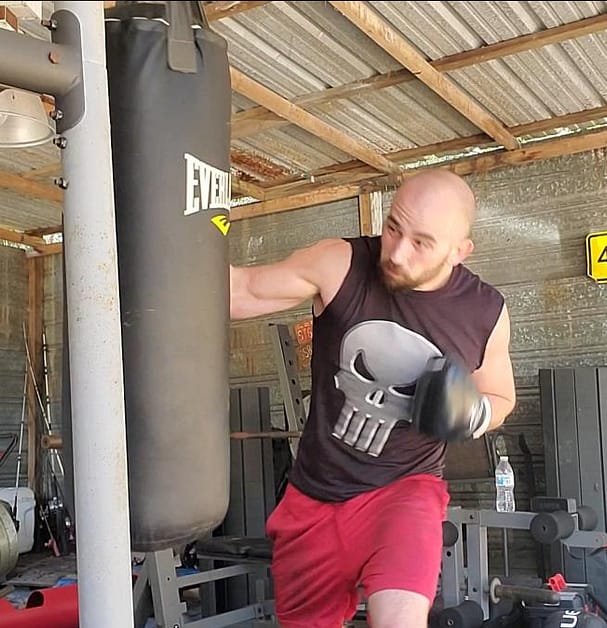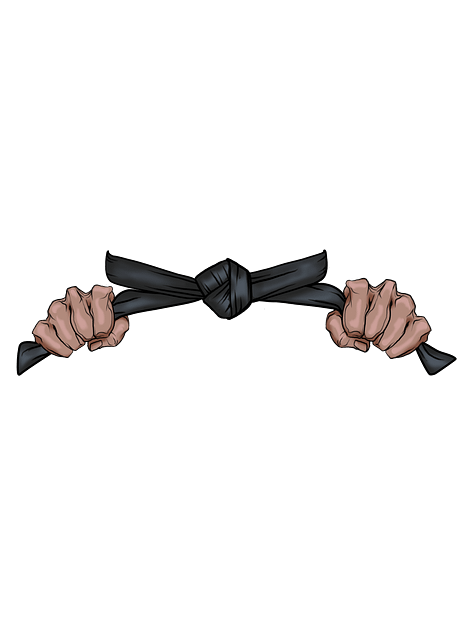Cutting weight for wrestling
The topic of cutting weight for wrestling has been a controversial topic for some time. The fact of the matter is that the sport is far safer in this regard than it might have been 20 or 30 years ago. Weight cutting used to involve midnight runs with duct tape and garbage bags.Today it is much more of a science and there are strict rules in place to make sure wrestlers remain safe. In this post we will discuss the best and safest ways to cut weight for wrestling, but we will also go over some of the rules. Most wrestlers are going to be kids, so I want to be clear this is post is geared towards high school age athletes that are just getting started. Adults that wrestle should already be aware of these suggestions.
Wrestling weight certification
Wrestlers now have to “certify” at a certain weight. An official that is sanctioned through the state wrestling board will come in just before the season. That official will have a wrestler get on a scale to measure body weight. Then that official will measure body-fat percentage and record the lowest weight that wrestler can drop to that season. The official in charge has determined based on state criteria what the safest weight that athlete can weigh and compete. A wrestler that carries more fat early in the season may be allowed to lose more weight. But that wrestler also will have a lower limit to the weight he is allowed to lose if he wants to compete.
It might be a good idea for wrestlers who are carrying some extra weight around to work hard at losing fat before weight certification time comes. Once you are certified, you cannot drop any lower than the weight class you were certified. This could be a problem for a wrestler who suddenly loses a lot of weight during the season, because even if they could make the next lowest weight, they are not allowed to compete in that weight. Moral of the story is to go ahead and work on fat loss before the season even starts.
Wrestler weight classes
Wrestlers also have different weight classes now. A wrestler that competed in high school 30 years ago could have had to make a weight class of just 96 pounds. Smaller athletes may have found this beneficial but the states decided that even freshman in High School should not be cutting that much weight. Over time, the lowest weight classes have increased.
A wrestlers lowest weight class went from 96lbs to 103lbs to 106lbs today. The wrestler weight classes have gone up by 10lbs in not a terribly long time, then you have weight allowances.
High school wrestlers typically compete in one of 14 weight classes established by the NFHS. In the lowest weight class, wrestlers can weigh no more than 106 pounds. The maximum weights, in pounds, for the remaining classes are: 113, 120, 126, 132, 138, 145, 152, 160, 170, 182, 195, 220 and 285.

Wrestler weight allowance
Wrestlers in high school find that after a certain point of the year, they get a growth allowance. These athletes find that sometime after Thanksgiving they get an additional two pounds to work with. So a wrestler that was competing at 106lbs now only has to weigh in at 108lbs. This gives young wrestlers a chance to grow and eat during the holidays. But not so much leeway that they could afford to get fat and sluggish!
Losing weight for wrestling
The sport of wrestling, if done correctly is an activity that will whip most into shape in just a few months. But there are some athletes that have experience but want to compete at a lighter weight class. A wrestler competing at a lighter weight class often creates a strength advantage for the “bigger” wrestler. That wrestler often can wear down a smaller opponent over time if the smaller opponent isn’t significantly more skilled.
Cutting weight for wrestling should include a season long plan of monitoring calories daily and getting in plenty of practice. Food is good, too much food is bad. There is a balance here. A wrestler should eat what he (or SHE) needs to function and not “cheat” too much on their meal plan. They should make sure to get some extra work in after wrestling practice also. Not necessarily for the weight loss, but because it is a good habit to do a little bit extra as a wrestler.
One of the most common things wrestlers do on their own is running. Running is free, does not require a ton of investment, improves cardio and also helps keep weight in check. My recommendation is two to three miles of brisk jogging two or three times a week. A wrestler that does this should not only control his or her weight, he or she should find they have better endurance for matches before the season is over.
Lose as much as possible in the offseason
Many athletes try to put on size and strength during the offseason, wrestling is no different. There are ways to shed some fat while building strength during this time, even with strength improvement in mind. During this time a serious wrestler may be very active. For example, they might not only be strength training, they probably will still be attending club practices and competing in summer wrestling tournaments. Like the old saying goes, “Summer wrestling makes winter champions”.
With this in mind, the goal of the wrestler is more broad. They are working on their athletic ability and working on technique. Finally, they are testing their improvement in tournaments.The main thing to keep in mind here is overall improvement. Making a certain weight is not the goal, so gradually getting in better condition as the season approaches is more important.
In this case the diet should include plenty of protein, but carbohydrates and fats are still okay. The carbs will keep the wrestler fueled for their strength workouts, summer practices and tournaments.The caveat here is that the total calorie intake should be close to their maintenance intake. In other words, this is not the time to be eating a bunch of junk on a regular basis. A cheat meal here or there is fine, just stay focused most of the week. Cutting weight for wrestling during the offseason is focused on pure fat loss. Keep the calories in check, but not too low, and get plenty of physical activity.
Cutting weight during the season
The wrestling season starts very quickly in high school. For brand new wrestlers they may find that the first real wrestling match is only a month and a half or two months away from the first day of practice. That is not a lot of time for a young wrestler, or any wrestler, to learn and practice technique and focus on getting to an ideal weight.
In the summer the focus is more on total daily calories, during the season the focus is on calories and macronutrients. Macronutrients are just things like protein, fats and carbs that are taken in daily. The reason that macros are important during the season is that protein should remain high to preserve strength and carbs should be reduced to reduce water weight.
Carbs add water weight, so it is a good idea to shift the diet to a higher fat, lower carb plan a few weeks ahead of the first match. Carbs can account for 50% of daily calories for most people. More if you consume sugary drinks or sweets. To start losing water weight reduce this number to 30% or less and bump up healthy fats and protein to stay strong.
Salt also adds water weight, make sure that you try to avoid high salt foods in the days leading up to a match.
Cutting weight the day of a match
Wrestlers often have a few pounds to lose the day of a match or wrestling meet. The weight loss rule of thumb (in my opinion) is the bigger you are the more you can safely cut. As I said early on, the officials have already determined what your weight might safely be before the end of the season. This does not stop wrestlers from overeating just a day or two before a big tournament or match however.
The goal of cutting weight for wrestling boils down to being as big and strong as you can possibly be at your weight, while also having the endurance to maintain as much strength and intensity as possible. A wrestler that loses so much weight that they cannot effectively wrestle after three minutes, is not going to succeed. A wrestler that is constantly facing much bigger opponents, may succeed but they may also find that they struggle against someone with a strength advantage. Especially if the skill level is close to the same.
As I mentioned earlier, the diet should be limiting carbs during the season, the exception is after the weigh in. The day of the match it is fine to load up on carbs and hydrate after you have weighed in. Not only will you have the fuel you need to compete, you will also come in a few pounds heavier, making you harder to move.
Stay close to competition weight
The best way to cut weight is to stay as close as possible to the weight that you wrestle. You will find you are typically a few pounds lighter in the morning than in the afternoon. If you moderate your intake throughout the day you may also find you are either at the desired weight or very close by match time.
Wrestlers should also keep in mind that during the day of a tournament you might have several hours from weigh in time until competition time. This gives these young athletes a chance to eat, hydrate and digest their food before matches begin. Even a dual meet, which is usually a 1 team vs 1 team affair, you may have somewhere between 1 and 2 hours between weigh ins and actual competition.
Supplements for wrestling
Nutrition is important for any athlete, but with weight class sports like wrestling it is even more important. In the offseason the diet is not as strict so most of the nutrition should be part of a balanced diet. This includes fruit, vegetables, lean meats and healthy fats.
During the season, carb intake should be reduced, so that will limit grains and most fruits. Many vegetables are high in carbs too, so that may also be reduced. This will call for additional supplements.
Off-Season Supplements
The following supplements may be beneficial to wrestlers during off-season programs.
- Multivitamin- Not just any multivitamin, get the type that are inspected for potency and the use of fillers. Absorption is key here for athletes. I recommend PURE multivitamins. They are gluten free, GMO free and they have no unnecessary binders and fillers. The vitamins are in their bioavailable form, so that the product is easily digested and absorbed.
- Creatine- Creatine has been proven safe and it has shown to improve performance with high intensity exercise. It also helps with strength and muscle building. Read the recap of over 500 creatine studies here (National Library of Medicine). The downside is it attracts water weight, so its best to avoid this during the season with the possible exception of after weighing in for a match.
- Protein- Protein is essential during the season and after the season. I like the IronMag Labs brand because it has multiple protein types that keep muscles fed with amino acids for hours. Whey protein powders are used because of how quickly they are absorbed, especially after a workout. But your muscle can absorb a certain amount of protein per hour. The IronMag Labs brand has Whey protein and NINE other protein sources proven to keep the amino acids flowing for up to 6 hours. In other words, you get the immediate boost and a sustained flow so you absorb the maximum amount of protein. Get 20% off your products by using the coupon code “Iron Body”. Read more about their protein here.
In season Supplements
During the season it is important to stay on a multivitamin and of course, protein. I personally would eliminate creatine all together or just save it for weigh in on the day of a match. There are some pre and post workout products on the IronMag Labs site that might be worth considering due to the carb limitations. However, if you feel energized and strong throughout training, I would skip those too. You can read more about IronMag Labs Hardcore Supplements here. Bottom line is cutting weight for wrestling will focus on eliminating water weight during the season and keeping strength. The offseason was the time to really push the fat loss.
Weight cutting for wrestlers closing
I am not an advocate for big weight cuts for wrestlers, especially high school wrestlers. I prefer to see them at weight or maybe a pound or two over knowing that they can easily lose those last two pounds and that the end of the year grants them a weight allowance. My preference is to see kids who don’t have to cut weight at all. That is unrealistic however as athletes will seek an advantage.
Cutting weight for wrestling boils down to how much weight a wrestler can safely and reliably cut vs. their performance. This only can be learned through experience. Remember, fat loss during the offseason, lose water weight during the season, get plenty of protein and watch your macros.



